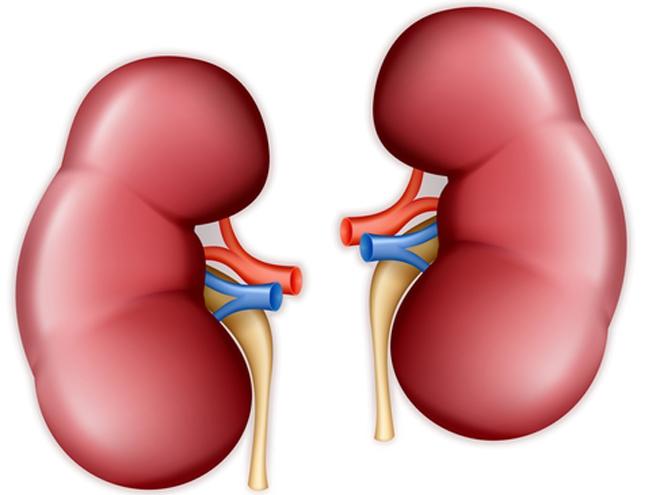
Among patients with systemic lupus erythematosus (SLE), 25% to 60% develop lupus nephritis, the most common severe manifestation of SLE and a major cause of illness and death. The percentage of patients with lupus nephritis who have a positive renal response is low despite aggressive treatment. Ten to 30% of patients with lupus nephritis progress to end-stage kidney disease (ESKD). The risk of ESKD in this patient population has remained unchanged for the past 30 years.
The US FDA approved belimumab, a recombinant human IgG-1A mononclonal antibody that inhibits B-cell activating factor, for patients ≥5 years of age with active autoantibody-positive SLE. Patients with acute severe lupus nephritis were excluded from the trials used for the FDA approval; thus, there are few data available on the efficacy and safety of belimumab in patients with lupus nephritis.
Richard Furie, MD, and colleagues conducted BLISS-LN (Belimumab International Study in Lupus Nephritis), a phase 3, multinational, multicenter, randomized, double-blind, placebo-controlled trial to assess the efficacy and safety of belimumab in combination with standard therapy (mycophenolate mofetil or cyclophosphamide-azathioprine) in patients with lupus nephritis. Results of the study were reported in the New England Journal of Medicine [2020;383(12):1117-1128].
Adult patients with biopsy-proven, active lupus nephritis were assigned in a 1:1 ratio to receive intravenous belimumab (at a dose of 10 mg per kilogram of body weight) or matching placebo in addition to standard therapy. The primary end point at week 104 was a primary efficacy renal response, defined as a ratio of urinary protein to creatinine of ≤0.7, an estimated glomerular filtration (eGFR) that was no worse than 20% below the renal flare (pre-flare value) or ≥60 mL/min/1.73 m2 of body surface area, and no use of rescue therapy. The main secondary end point was a complete renal response, defined as a ratio of urinary protein to creatinine of <0.5, an eGFR that was no worse than 10% below the pre-flare value or ≥90 mL/min/1.73 m2, and no use of rescue therapy.
A total of 797 patients underwent screening from July 2012 through July 2017. The final cohort included 448 patients who underwent randomization, 224 to the belimumab group and 224 to the placebo group. The modified intention-to-treat population included 223 patients in each group. Randomization was stratified according to induction regimen (59 patients in each group had received cyclophosphamide and 164 in each group had received mycophenolate mofetil) and race (31 patients in the belimumab group and 32 in the placebo group were Black and 192 patients in the belimumab group and 191 in the placebo group were not Black). Through week 100, 65% of the belimumab group (n=146/223) and 59% of the placebo group (n=132/223) received a trial agent.
The two groups were balanced in baseline characteristics. Mean age was 33.4 years and median duration of lupus nephritis was 0.2 years. Of the total cohort, 58% (n=258/446) had a kidney-biopsy specimen classified according to International Society of Nephrology and Renal Pathology Society criteria as class III or IV lupus nephritis, 26% (n=116) had class III or IV coexisting with class V, and 16% (n=72) had pure class V.
At 104 weeks, a primary renal response was observed in significantly more patients in the belimumab group than in the placebo group (43% [96/223) vs 32% [72/223]; odds ratio [OR], 1.6; 95% confidence interval [CI], 1.0-2.3; P=.03). Individual components of the primary efficacy renal end point at week 104, including a decrease in the ratio of urinary protein to creatinine to 0.7 or less and no treatment failure, occurred more often in the belimumab group than in the placebo group.
More patients in the belimumab group than in the placebo group had a primary efficacy renal response earlier (week 52) (47% [104/223] vs 35% [79/223]; OR, 1.6; 95% CI, 1.1-2.4; P=.02). At each visit, starting at week 24, more patients in the belimumab group had a primary efficacy renal response than those in the placebo group. The chance of having a primary efficacy renal response that was sustained through week 104 was higher in the belimumab group than in the placebo group (hazard ratio, 1.46; 95% CI 1.07-1.98).
At week 104, significantly more patients in the belimumab group than those in the placebo group had a complete renal response (30% [67/223] vs 20% [44/223]; OR, 1.7; 95% CI, 1.1-2.7; P=.02). More patients in the belimumab group compared with patients in the placebo group had components of a complete renal response at week 104, including a decrease in the ratio of urinary protein to creatinine of less than 0.5 and no treatment failure. From week 12 onward, more patients in the belimumab group had a complete renal response than those in the placebo group. The chance of a complete renal response that was sustained through week 104 was higher with belimumab than with placebo (hazard ratio [HR], 1.58; 95% CI, 1.08-2.31).
The risk of a renal-related event or death during the study period was significantly lower in the belimumab group than in the placebo group (HR, 0.51; 0.34-0.77; P=.001). Those results were due primarily to increased proteinuria, impaired kidney function, or both (in 17 patients in the belimumab group and 39 patients in the placebo group) or kidney-related treatment failure (16 in the belimumab group and 20 in the placebo group).
The safety profile for belimumab plus standard therapy was similar to that of standard therapy alone. There were no anti-belimumab antibodies detected. Infection-associated deaths were balanced between the two groups, and there were no deaths directly attributed to lupus nephritis by the investigators.
Limitations to the study findings included the low enrollment of Black patients and patients receiving cyclophosphamide-azathioprine, and only allowing two induction and maintenance regimens as background therapy.
In summary, the researchers said, “The current international trial involving 448 patients showed that belimumab plus standard therapies for lupus nephritis enhanced renal responses; furthermore, the risk of a renal-related event during the trial was almost 50% lower among patients who received belimumab than among those who received standard therapy alone. Up to 3 g of mycophenolate mofetil or cyclophosphamide-azathioprine was combined with belimumab in our trial, and we did not observe adverse events that differed from those in previous trials involving patients with SLE who received belimumab or other trials involving patients with lupus nephritis.”
Takeaway Points
- Researchers reported results of a phase 3, multinational, multicenter, randomized, double-blind, placebo-controlled trial designed to examine the efficacy and safety of intravenous belimumab plus standard therapy in patients with active lupus nephritis.
- At week 104, significantly more patients in the belimumab group had a primary efficacy renal response and a complete renal response compared with patients in the placebo group.
- The risk of renal-related event or death was lower in the belimumab group than in the placebo group. The safety profile for belimumab plus standard therapy was similar to that of standard therapy alone.







 © 2025 Mashup Media, LLC, a Formedics Property. All Rights Reserved.
© 2025 Mashup Media, LLC, a Formedics Property. All Rights Reserved.